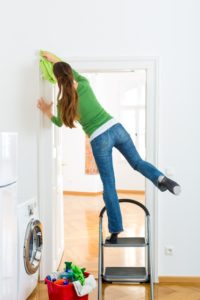Some degree of dust buildup in our homes is almost inevitable. The dust that settles in various parts of your home may harbor tiny substances that activate wheezing or coughing. They also trigger symptoms of asthma or other allergic reactions like stuffy noses and dermatologiair jordan 1 element
best human hair wigs for black females
8 ft kayak
keyvone lee jersey
bouncing putty egg
custom nfl football jerseys
blundstone uomo
best human hair wigs for black females
sit top kayak
best human hair wigs for black females
dallas cowboys slippers mens
smith and soul
bouncing putty egg
air max 270 women
bouncing putty egg
cal reactions. These substances, found on dusty surfaces, which set off such reactions are called allergens. For general health it is important to know How to Control Allergens in your home.
It follows that controlling the buildup of dust and the proliferation of dust mites in and around your home is very important. It is the key to minimizing the adverse effects of allergic reactions from allergens. So it is sensible to carry out a couple of simple measures to minimize the levels of allergens in the house and enjoy healthy, clean and breathable indoor air quality.
Living Room
If you can, get rid of carpeting. Instead rely on hardwood or linoleum flooring or washable rugs. Make sure you clean rugs and floor mats on a weekly basis. If you cannot take the step to remove Carpets you will need to buy very best Carpet Vacuum.
Ensuring that wall to wall carpets receive regularly shampoo treatment will make a big difference. Where possible, choose low pile carpets as opposed to their high pile counterparts which are more susceptible to dust buildup. The use of stoves or burning firewood in fireplaces are both sources of smoke which can also trigger respiratory allergies.

Pets: If allergens were the only consideration, and if climate and space permit, it would be desirable to keep your pets out of your house. If this is not possible, be aware that the hair or fur of some domestic animals like cats has been known to trigger allergic reactions. This is particularly true for those who are asthmatic. If you have pets in the home, more frequent cleaning with a specially designed pet vacuum cleaner is recommended.
Plants: Keep potted plants out of you house. The soil in pots tend to develop mold, which literally EMIT allergens. If you do have indoor plants, use some aquarium gravel to cover the dirt. This will help stunt the growth of mold.
Windows: it is wise to keep windows closed during the pollen season or when dry and windy conditions mean high dust levels. This will reduce CVF allergens. If possible, rely on air conditioning during these times. The window sills and frames should also be cleaned regularly.
Curtains: The curtains should be easy to remove for periodic washing. As they are second line of defense behind your windows, dust and pollen and allergens will accumulate in the fabrics.
Air
When looking at how to control Allergens, you can’t go past high performing air cleaners like the HEPA filters. (Special high efficiency particulate Air) will purify the air around your home. These will help by eliminating undesirable tobacco smoke from the home along with other forms of allergens.
Use of ordinary ceiling fans help in distribution of allergen carrying dust due to their design and movement. Air conditioning is the ideal form of air temperature management particularly in cases where windows have to remain closed.
Carpets, bedding and furniture

Try to avoid upholstered furniture with fabric coverings, or choose lighter fabrics that would not collect as much dust.
In your bedroom, remove items that may act as dust collectors. Things like artificial flowers, heavy books, stuffed toys and other collectables that, in your judgment are likely to accumulate dust and allergens.
In other rooms the changes may be more difficult to make, as other family members will be involved in the choices being made. Decisions like the type of couch to have in the home, the nature of curtains, carpets and furniture etc. For harmony it is advisable to discuss key changes with your family before embarking on new purchases or removal of existing items.
One of the biggest challenges in learning how to control Allergens is wall to wall carpeting. Carpets look lovely and add warmth to the home, so the household may not be too enthusiastic about eliminating them. In such cases it might be prudent to reach a compromise. Share the wall to wall carpeting with them in rooms like the living room but remove it bedrooms of those impacted by allergies.
Kitchen
Keep a dust bin with a lid that is insect proof. Make sure it is emptied daily, since the food crumbs will attract rodents which are also a source of allergens. An exhaust fan or Rangehood can be installed to direct stove fumes away from the house. Wash dishes daily and clean off excess moisture from the refrigerator to keep down mold.
Finally store all kinds of food, yours and that of your pets in sealed containers.
Bathroom
Another place where we must find out how to control Allergens is the bathroom. It is so susceptible to mold, especially in moist warm climates, that extra care should be taken here to manage it.
Flooring should be done using tile, wood or linoleum flooring. Any rugs that are placed in the bathroom should be easy to wash. Ensure you regularly scrub off mold from hidden surfaces particularly those related to plumbing. When decorating it is wise to use special Mold resistant paints.
How to Control Allergens through the Entire house

If possible, the temperature and humidity around the house should be carefully managed. This will prevent the conditions for breeding of dust mites and mold. The conditions inside your house should reduce the problem, without reducing your comfort. Where possible, aim for temperatures that range from 68 F (20C) and 72F (22C) and maintain humidity levels at no more than 50%.
Control pests such as cockroaches and mice via traps or hire professionals to get rid of them without causing harm to your health. Washable surfaces can be cleaned using a solution consisting of 5% chlorine bleach. Inspect the roof and ceilings, checking for any leaks that may aid in the formation of mold.
Finally, develop a weekly cleaning routine that involves dusting, vacuum cleaning, and cleaning of hard surfaces with damp cloth.
Post entry: BLOG



I live in Arkansas and recently purchased our first HYLA vacuum . My children and I have severe allergies and my son has asthma.
Since using this product we immediately noticed a difference . I though my home was clean until I vacuumed with the HYLA . I’m truly happy with this product and would recommend it to families who struggle with allergies . I’ve had Hoover vacuums and even a Kirby and can say this product by far is amazing.
Hi Denise, I’m glad to hear that it’s working quite good for you and the family. Honestly, this is the first time I heard about HYLA vacuum. I did a quick search about it and find it interesting. It uses a water filtration system or some sort to filter out dust or particles, so it is not the usual filtration system most found in vacuum cleaners. HYLA vacuum is very expensive too. But if it does work really well, it is a good investment actually.
By any chance if you want to write a review/experience with the HYLA vacuum, you can contact me thru our contact page and let me know. I will be happy to post your review in our site. Cheers
I just saw this, i would be more than happy to write a review and email it to you, i have not seen many reviews out there about this awesome product and i think it would be great if people got to know a little bit more about the HYLA system and how it works. Thank you for the opportunity, you will be hearing from me soon!
Hi Denise, we are glad to hear that. Just contact us anytime thru our contact page. Cheers